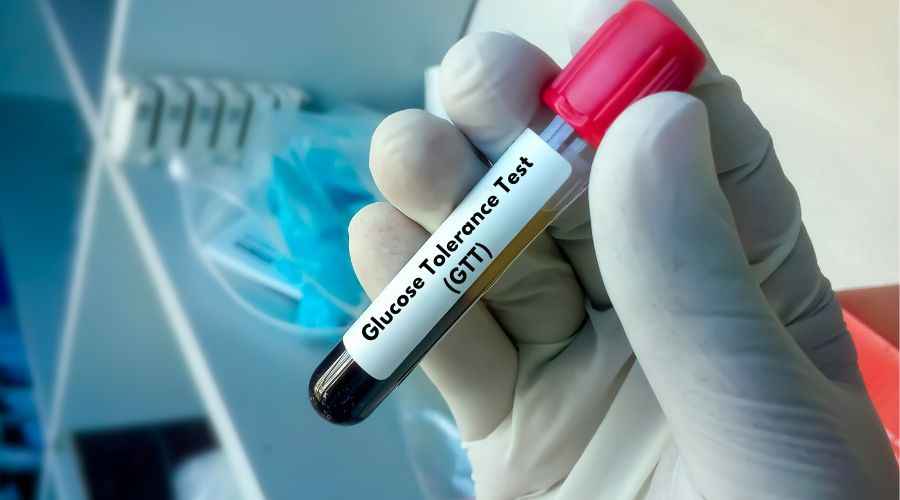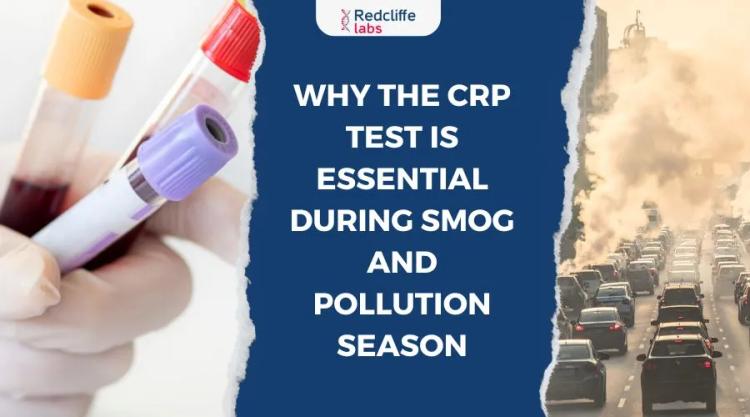GTT Test: Price, Purpose, Procedure, Normal Range, & Results

Medically Reviewed By
Dr. Ragiinii Sharma
Written By Kirti Saxena
on Jun 7, 2024
Last Edit Made By Kirti Saxena
on Jul 19, 2025

Table of Content
Introduction to OGTT Test
The glucose Tolerance Test or GTT test helps assess how well your body metabolizes Glucose. Glucose is sugar, the main source of energy for our cells. The body absorbs Glucose from food, travels through blood, and, with the help of insulin, enters cells to be used for energy production. If the body cells have difficulty accepting insulin or the pancreas doesn't produce enough insulin, this can cause high glucose levels in the blood. This may raise the risk of prediabetes and diabetes. Diabetes is a condition where the body attacks insulin-producing cells and causes severe insulin deficiency and high blood sugar.
The test diagnoses prediabetes and diabetes, both of which can lead to serious health complications if not diagnosed on time.
If you are noticing symptoms like unexplained weight loss, excessive thirst, or frequent urination, that can be early signs of diabetes. Consult your doctor and take a GGT test to know your glucose levels. Early detection of prediabetes and diabetes allows for early intervention and lifestyle changes to prevent or delay complications. Choose Redcliffe Labs as your diagnostic partner to get the GTT blood test. With us, you can book your test in just one minute, and a professional phlebotomist will come to your home to collect the blood sample. Book your OGTT test home collection with us today!
Test details in brief
| Also Known As | Oral Glucose Tolerance Test, OGTT, GTT, |
| Purpose | This measures Glucose levels in the blood to screen and diagnose Diabetes. |
| Preparation | Do not take any over-the-counter medicine without confirming with your doctor. |
| Fasting | No Fasting Required |
| Get Reports Within | Within 12 hours |
Purpose of the Glucose Tolerance Test
The test helps to identify the ability of the body to process Glucose. The test is helpful in diagnosing prediabetes and diabetes conditions that can cause serious health issues.
- Diagnose diabetes- The GTT blood test helps to identify prediabetes and diabetes conditions before they cause significant symptoms or damage to your body. Also, people in their 40s or above are at high risk of diabetes; your doctor may advise you to take the GTT test.
- Monitoring diabetes- For people who are already diagnosed with diabetes, the GTT test helps to monitor how well the blood sugar levels are being controlled.
- Screening for and diagnosing gestational diabetes- This type of diabetes develops in pregnant women. If you are pregnant, then take the GTT test to be diagnosed early and get treated on time.
Preparation for the Glucose Tolerance Test
The GTT test does not require any special preparation. Simply follow the below instructions or consult your healthcare provider before taking the test-
- Fasting- 8-10 hours of fasting is recommended before the GTT test. Fasting prepares your body for the sugar load it will receive during the test.
- Medications- Discuss your medications with your doctor before taking the test, as some medications and supplements might affect your test results.
- Inform your doctor- It is important to inform your doctor about your medical history and diseases that sometimes may affect your test results.
Additional Instructions:
- The first sample will be taken during fasting overnight.
- The second sample after 1 hour of drinking 75 grams of oral Glucose.
- The third sample will be taken after 2 hours of glucose solution consumption.
- The Glucose used in the different GGT tests is 50 gm, 75 gm or 100 gm.
The procedure of the Glucose Tolerance Test
The GTT test procedure is simple. The phlebotomist will provide the glucose solution and ask you to drink and consume the sugary solution. After 1 or 2 hours of time intervals, the phlebotomist will collect the blood sample. During the procedure, the healthcare provider will ask you to show your arm and then will tie a band or tourniquet to it. After that, the healthcare provider will clean the arm area with an antiseptic solution. Using a sterile needle, the phlebotomist will collect the blood in a vial or tube. You might feel a little pinch or pain during the procedure, but it will get back to normal in a few minutes. This blood drawn process will only take 3-5 minutes. After blood sample collection, the sample will be sent to the laboratory for further testing and diagnosis.
Types of Glucose Tolerance Test
While the standard Glucose Tolerance Test (GTT) involves two blood draws - one fasting and one two hours after consuming a sugary drink - there are actually several types of GTT blood test including GTT 2, GTT 3, and GTT 4 tests-
Glucose Tolerance Test or GTT 2 test-
The two-hour GTT, also known as the 75g GTT, is used in diagnosing prediabetes and diabetes conditions.
The test shows a more comprehensive picture of your body's glucose response. It assesses not just how quickly your blood sugar rises after consuming sugar, but also how efficiently your body clears it from the blood.
Glucose Tolerance Test 3 or GTT 3
The three-hour GTT is rarely used nowadays due to the accuracy and convenience of the two-hour test. The test covers parameters including Glucose for 1 hour, Glucose for 2 hours, and glucose fasting. The test helps to identify the most common cases of prediabetes and diabetes, and the GTT 3 provides even more detailed information about your body's glucose metabolism. This can be helpful in specific situations, such as diagnosing rare forms of diabetes or monitoring patients with complex metabolic conditions.
Gestational Glucose Tolerance Test 4 or GTT 4
The test measures the blood glucose levels while fasting. In a 75-gram glucose tolerance test pregnancy, the phlebotomist will ask to consume a glucose solution, and after some interval, the blood sample will be collected. This covers the parameters including Glucose 1 hour, Glucose 2 hours, Glucose 3 hours and Glucose fasting and Glucose fasting (BSF). This helps healthcare professionals evaluate gestational diabetes in pregnant women and how well the insulin response is working.
Who should take the GTT test?
The Glucose Tolerance Test (GTT) isn't recommended for everyone, but certain individuals are prime candidates for it due to their increased risk of prediabetes or diabetes. Here's a breakdown of those who should prioritize this test:
People with high risk factors-
- Family history
- Overweight or obese
- Inactive people
- Gestational diabetes in pregnancy
- Polycystic ovary syndrome (PCOS)
- High blood pressure
- High High cholesterol
The people experiencing symptoms like-
- Sudden weight loss
- Excessive thirst and urination
- Fatigue and low energy
- Blurred vision
- Skin changes
Other reasons you must take the GTT test-
- Women with a history of preeclampsia or delivering a large baby during pregnancy.
- People have certain medical conditions like prediabetes, metabolic syndrome, or fatty liver disease.
What are the common symptoms related to Diabetes?
Not everyone with diabetes experiences the same symptoms; some might not notice any symptoms until the complications arise, but these are some common symptoms that most people notice. These symptoms are-
- Feeling thirsty
- Frequent Urination
- Excessive hunger
- Weight loss
- Fatigue and low energy levels
- Slow healing of wounds and infections
- Blurred vision
- Tingling and numbness in hands and feet
- Skin changes in armpits, elbows, knees, and neck
If you suspect any of the symptoms, consult your doctor and take a GTT test as early as possible. Early diagnosis and proper management can prevent or delay complications and improve your overall health.
What do the GTT test results Indicate?
After blood sample collection, the test reports will be provided in 12 hours. The GTT blood test results will provide insights into your body's ability to process sugar (Glucose). Interpreting these results, however, can be a bit complex, as different blood sugar levels at various time points need to be analyzed together. Here is how your GTT results are interpreted:
Fasting blood sugar test results-
Normal- Less than 100 mg/dL.
Prediabetes- 100-125 mg/dL.
Diabetes- 126 mg/dL or higher.
1-Hour Blood Sugar test results-
Normal: Less than 140 mg/dL.
Prediabetes: 140-199 mg/dL.
Diabetes: 200 mg/dL or higher.
2-Hour Blood Sugar results-
Normal: Less than 140 mg/dL.
Prediabetes: 140-199 mg/dL.
Diabetes: 200 mg/dL or higher.
Here's what your GTT results might indicate:
- Normal GTT- If the GTT levels are normal, it means your body has the ability to process sugar and your risk of diabetes is low. However, regular monitoring and healthy lifestyle choices are still important to control the risk of diabetes.
- Prediabetes- If your blood sugar levels are higher than normal it might not be diabetes but you are at high risk of developing diabetes. This is a warning sign that you need some lifestyle changes and medication that can help prevent the progression of diabetes.
- Diabetes- If the blood sugar levels are consistently high, it means you have diabetes. Depending on the type and severity of your test reports, your doctor will recommend a treatment plan, including medication, lifestyle changes, and regular blood sugar tests.
- Gestational Diabetes- If the blood glucose levels are high in pregnant women, it might be an indicator of gestational diabetes. The GTT 4 test helps find the risk of gestational diabetes in pregnant women. However, early diagnosis and management of gestational diabetes are crucial for both mother and baby's health.
Get the GTT Test - Your Key to a Diabetes-Free Life
The GTT test is used to assess how the body handles Glucose. The test helps to measure blood glucose levels. It is not just a sugar challenge; it's a peek into your body's ability to handle the sugar and helps to identify the silent threat of prediabetes and diabetes before they cause harm. People in their 40s or above or at high risk, like family history, obesity, or gestational diabetes, must take the GTT test. If you are looking for the best lab to get a GTT test, search GTT test near me and book your test from Redcliffe Labs. With them, you will get accurate test reports on time. Prediabetes and diabetes are often asymptomatic and, are silently threats in your body, and may cause symptoms from vision loss to nerve damage. The GTT test is a proactive step towards prevention, empowering you to make informed choices. A simple test can pave the way for lifestyle changes, medication if needed, and a healthier future.
FAQ
What is the GTT test?
The GTT test assesses how the body processes Glucose. The test involves fasting, followed by the consumption of a glucose solution. The test helps diagnose prediabetes and diabetes before serious complications arise.
How much does the GTT test cost?
The GTT test price depends on the type of GTT test. The test price of GTT 2 is INR 499, GTT 3 is INR 749, and GTT 4 is INR 999. You can take the GTT test from Redcliffe Labs.
How is the GTT test done?
The GTT test involves overnight fasting of 8 to 12 hours. Before blood sample collection, the phlebotomist will ask you to drink glucose solution. Blood samples are taken at intervals of 1, 2, and sometimes 3 hours after ingestion. The test assesses how the body processes glucose, helping diagnose conditions like diabetes or gestational diabetes based on blood sugar response.
How do you do a GTT test in pregnancy?
Before the GTT test, do not eat or drink anything for at least 8 to 14 hours. Your doctor will ask you to drink a sugary solution, and after 1 and 2 hours, the blood sample will be collected.
What is the GTT test normal range?
The normal fasting blood glucose level is less than 100 mg/dL. One hour after drinking the glucose solution, a normal blood glucose level is lower than 140 mg/dL and Two hours after drinking the glucose solution, a normal blood glucose level is lower than 145 mg/dL.
How many hours of fasting for the GTT test?
8-10 hours of fasting is required before the GTT test. Moreover, consult your doctor or healthcare provider about the test preparations before the test.
Can we drink water before the GTT test?
Do not eat or drink anything at least 8 to 14 hours before the test. During the test, you will be asked to drink a glucose solution.
Can the GTT test be wrong?
Yes, the GTT sometimes might produce false-positive or false-negative results. Get the GTT test from Redcliffe Labs to get accurate test reports.
Does the GTT test tell both sugar & diabetics?
Yes, the GTT test assesses how the body processes Glucose and is used to diagnose conditions related to blood sugar regulation, including type 2 diabetes. It measures blood sugar levels and provides insights into the body's ability to handle Glucose and detect diabetes.



